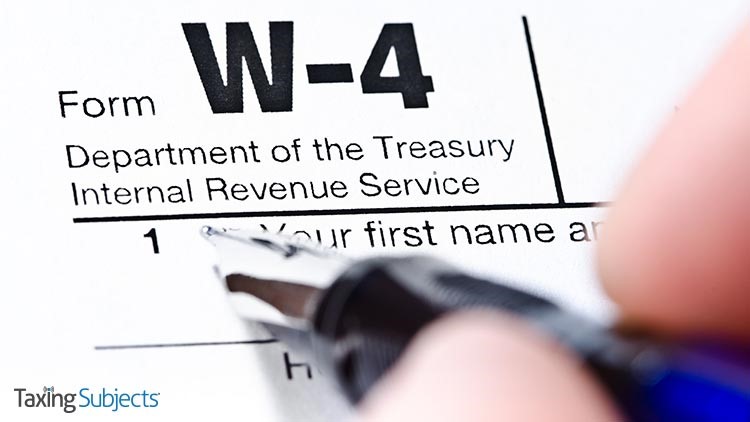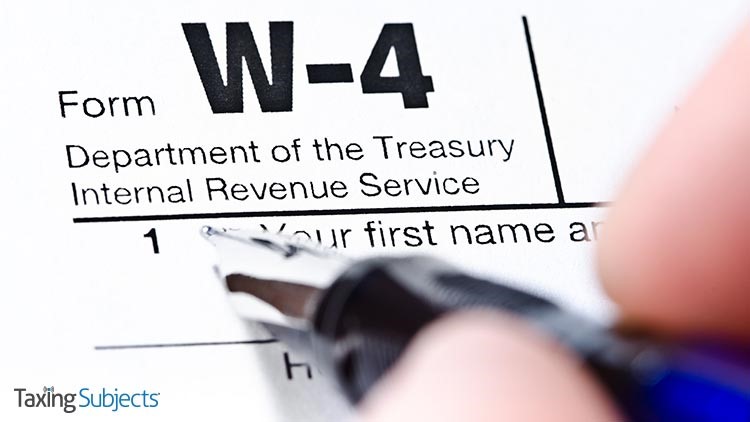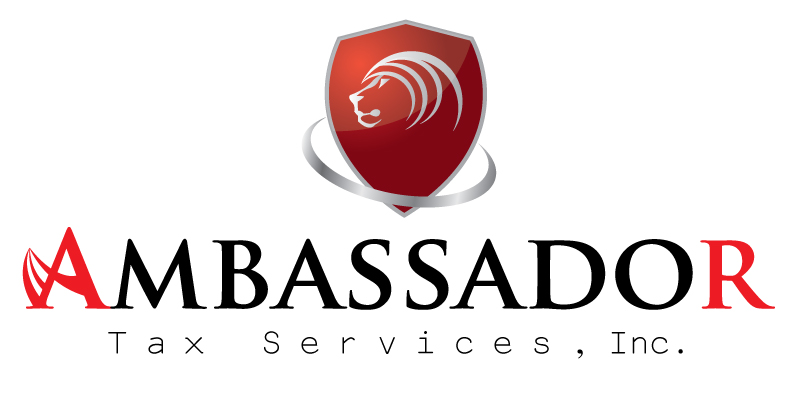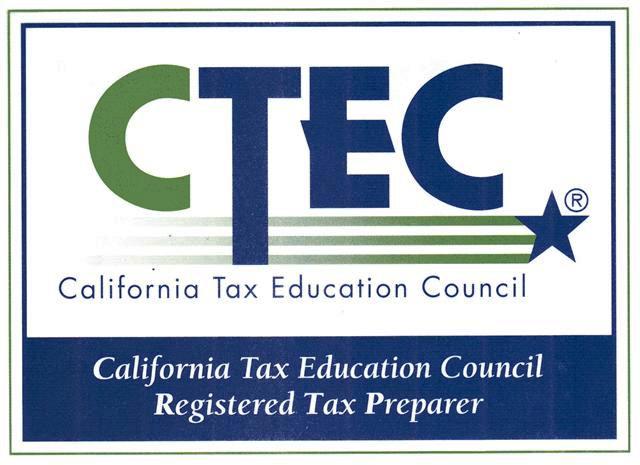
by Ambassador Tax Services, Inc. | May 10, 2022 | Tax Tips and News
A reworked version of Form W-4 has been released by the IRS and the Treasury Department for the 2020 tax year. A number of changes were made to earlier draft versions of the form in response to complaints from tax professionals.
Accounting Today reports Treasury doesn’t expect to make further changes beyond some small inflation-adjustment updates.
The redesigned Form W-4 uses a building-block approach, replacing complex worksheets with straightforward questions, making it simpler for employees to figure withholding accurately. The new form uses the same basic information as the old design, but employs a more personalized, step-by-step approach to better accommodate taxpayers.
Accounting Today reports the redesign will not force employees to resubmit a Form W-4 simply because of the update. Employers can continue to figure withholding based on information from the most recent W-4 submitted.
Complaints from Tax Pros
The complaints about the draft version of the form, Accounting Today reports, came from accountants and tax practitioners alike, who said the draft version required taxpayers to reveal too much information to their employers about outside sources of income for employees and their spouses.
The tax reform package passed in late 2017 eliminated traditional exemptions for taxpayers and dependents along with a long list of deductions, increasing the standard exemption amounts instead. The IRS urged taxpayers to do a “paycheck checkup” last year to make sure enough was being withheld from the taxpayers’ paychecks, but few taxpayers went through the complicated process. As a result, many taxpayers found themselves owing tax because of inadequate withholding.
The IRS is urging taxpayers to do another withholding checkup this year to make sure the correct amount is withheld from their paychecks. The agency has also come out with a new Tax Withholding Estimator online tool to help.
– Story provided by TaxingSubjects.com

by Ambassador Tax Services, Inc. | May 7, 2022 | Tax Tips and News
It’s National Small Business Week, and this year’s theme is “Building a Better America Through Entrepreneurship.” Fittingly, the Internal Revenue Service is observing the occasion by providing free, tax-related resources to entrepreneurs entering the big world of small business.
Whether you currently serve business clients or want to start attracting entrepreneurs to your practice, this information can serve as a refresher before you have those conversations. Here are several highlights from the IRS top tips for new business owners.

Choosing a business structure
One of the first steps any new business owner must take is to choose the official reporting structure that best suits their company. This decision will determine which income tax return forms the new firm will have to file.
Here’s a quick overview of the most common business structures from the IRS:
- Sole proprietorship – When someone owns an unincorporated business by themselves.
- Partnerships – The relationship between two or more people to do trade or business.
- Corporations – In forming a corporation, prospective shareholders exchange money, property, or both, for the corporation’s capital stock.
- S Corporations – Are corporations that elect to pass corporate income, losses, deductions and credits through to their shareholders for federal tax purposes.
- Limited Liability Company (LLC) – Are allowed by state statute and may be subject to different regulations. The IRS will treat an LLC as either a corporation, partnership, or as part of the owner’s tax return (e.g., sole proprietorship) depending on elections made by the LLC and its number of members.
Business taxes decoded
Business structure also dictates which taxes are owed and how they should be paid. To help new entrepreneurs navigate their tax liability, the IRS lists four basic types of business tax and which entities need to pay them:
- Income tax – All businesses except partnerships must file an annual income tax return. Partnerships file an information return.
- Self-employment tax – Is a Social Security and Medicare tax primarily for individuals who work for themselves. Payments contribute to the individual’s coverage under the Social Security System.
- Employment tax – When small businesses have employees, the business has certain employment tax responsibilities that it must pay and forms it must file.
- Excise tax – Excise taxes are imposed on various goods, services and activities. Such taxes may be imposed on the manufacturer, retailer, or consumer, depending on the specific tax.
In most cases, business owners pay their income-based taxes—including self-employment tax—on a quarterly basis, using estimated taxes to avoid the shock of trying to pay an entire year’s worth of taxes (including possible penalties) at once.
What’s your business year?
New small businesses also choose a tax year: the accounting period they are expected to report income and expenses. While the calendar year—12 consecutive months starting January 1 and ending on December 31—may be the obvious choice, some will opt for a fiscal year—also 12 consecutive months, but ending on the last day of any month other than December.
As with all good rules of thumb, there is an exception: “A 52-53-week tax year is a fiscal tax year that varies from 52 to 53 weeks but does not have to end on the last day of a month.”
What’s an Employer Identification Number?
Most new businesses need an Employer Identification Number (EIN). “An Employer Identification Number (EIN) is also known as a Federal Tax Identification Number and is used to identify a business entity,” the IRS explains. “This is a free service offered by the Internal Revenue Service and business owners can get their EIN immediately.”
Taxpayers who want to get an EIN just need to visit “Apply for an Employer Identification Number (EIN) Online” on IRS.gov. The page explains the simple, three-step application process.
Good record keeping will save headaches
Keeping good records is critical to a business owner’s success. As the IRS notes, adequate recordkeeping is crucial for the following tasks and activities:
- Monitoring business progress
- Preparing financial statements
- Identifying sources of income
- Tracking deductible expenses
- Tracking basis in property
- Preparing tax returns
- Supporting items reported on tax returns with proper documentation
Business owners should also know that tax records need to be maintained for at least three years.
Additional resources
The IRS website has a number of tools and webpages devoted to helping small business owners make good decisions:
Interested in learning about business-tax topics and earning continuing professional education credits? DrakeCPE.com has courses ranging from Fundamentals of Preparing Form 1120 to Fringe Benefits: Tax Implications!
Source: IR-2022-98
– Story provided by TaxingSubjects.com

by Ambassador Tax Services, Inc. | May 7, 2022 | Tax Tips and News
With the deadline for filing individual tax returns come and gone, tax professionals everywhere are enjoying well-earned downtime. However, taking a little time with business-return clients to get a jump on planning for next filing season could bring unexpected savings. Now is the perfect opportunity to help your business-return clients qualify for deductions—some common and some expiring.

What is the Enhanced Business Meal Deduction?
Historically, business owners had the ability to deduct half the cost of business-related food and beverages at a restaurant. But for tax years 2021 and 2022, that deduction applies to 100% of the cost of the meal.
There are a few qualifications, however, the filer has to meet:
- The business owner or an employee of the business has to be present when the food or beverages are provided.
- The expense can’t be lavish or extravagant.
- Qualifying restaurants include those who prepare and sell food or beverages to retail customers for immediate consumption, whether on- or off-premises.
- Other businesses, such as grocery stores and convenience stores, that primarily sell pre-packaged foods that aren’t intended for immediate consumption, don’t qualify for the 100% deduction.
- And certain employer-operated eating facilities can’t be considered restaurants under the deduction’s requirements—even if they’re operated by a third party under contract.
IRS Publication 463, Travel, Gift and Car Expenses, has more information about deducting business meals, as well as how to keep records for meals.
How do business owners deduct a home office?
There has been an explosion in the number of business owners who work from home, and a lot of them may qualify for the home office deduction. Business clients interested in claiming this deduction have to choose between the regular method and the simplified method.
The regular method starts with the 44-line Form 8829, Expenses for Business Use of Your Home, which separates applicable operating costs into two categories: “direct expenses” that are fully deductible and “indirect expenses” that are based on the percentage of the home used for business. Indirect expenses are usually items related to the home itself:
- Real estate taxes
- Mortgage interest
- Rent
- Casualty losses
- Utilities
- Insurance
- Depreciation
- Maintenance and repairs
The simplified method uses a 6-line worksheet in the Schedule C instructions to figure the deduction, using a fixed $5-per-square-foot rate for business use of the home. Using this method, the maximum deduction is capped at $1,500 (which assumes 300 square feet were used for business).
While being more general in scope, the simplified method does offer other benefits. Those using the simplified method to figure home office deductions aren’t allowed to depreciate the part of the home that’s used for business, but they can use Schedule A to claim home mortgage interest, real estate taxes, and casualty losses as itemized deductions—and they don’t have to be split between personal and business use.
No matter which method is chosen, business expenses beyond the gross income limitation aren’t deductible. Publication 587, Business Use of Your Home, has more information on the home office deduction and how to figure it.
Where can I find other deduction opportunities?
The IRS provides the following publications to guide small business owners and tax pros!
- Publication 535, Business Expenses – information on a wide range of business deductions
- Publication 946, How to Depreciate Property – information on major expenses, such as depreciating buildings, equipment, and other assets
- Publication 334, Tax Guide for Small Business -for individuals who use Schedule C, this has tax information tailored to the needs of small business
How do I learn more about small business tax issues?
Earn continuing professional education credits while learning more about business tax topics! The tax-education specialists at DrakeCPE.com have created in-depth courses that can help you better serve small-business clients:
Source: IR-2022-100
– Story provided by TaxingSubjects.com










